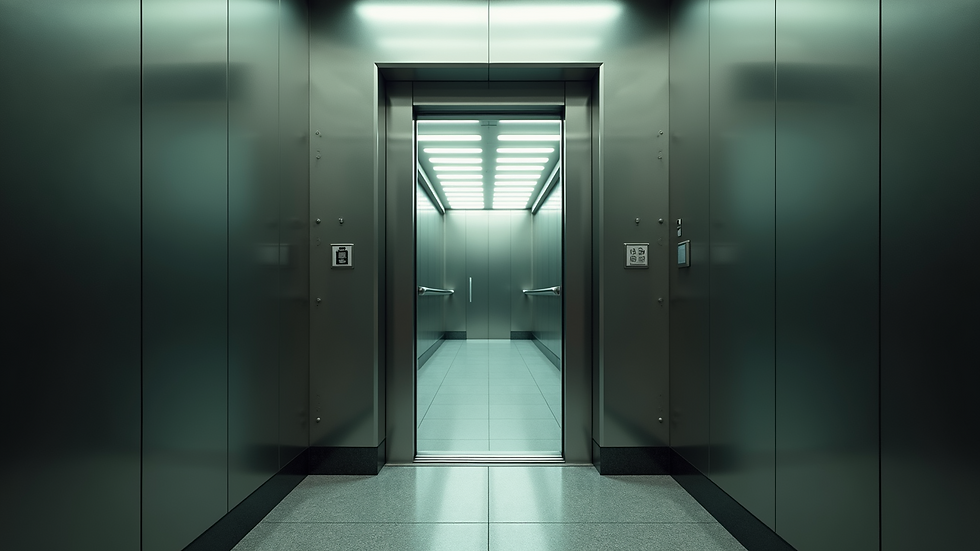Handling Emergency Lift Repairs Efficiently
- Mitch Greenaway
- 4 minutes ago
- 3 min read
When a lift stops working, it can cause major disruption. Whether it’s a busy office block, a care home, a school, or a private residence, a malfunctioning lift affects daily routines and safety. I’ve seen how quick, effective action can make all the difference. In this post, I’ll share practical tips and clear steps to handle lift malfunction fixes efficiently. You’ll learn how to respond fast, minimise downtime, and keep everyone safe.
Understanding Common Lift Malfunction Fixes
Lifts are complex machines. They rely on electrical systems, mechanical parts, and safety controls working perfectly together. When something goes wrong, it’s usually one of a few common issues:
Power failures: Sudden loss of electricity can stop a lift mid-journey.
Door faults: Doors that won’t open or close properly are a frequent cause of breakdowns.
Control system errors: Faulty wiring or software glitches can disrupt lift operation.
Mechanical wear and tear: Worn cables, pulleys, or brakes can cause jerky or halted movement.
Overload problems: Lifts have weight limits. Exceeding these can trigger safety stops.
Knowing these common problems helps you spot issues early and communicate clearly with repair teams. It also helps you understand the urgency and type of fix needed.

How to Approach Lift Malfunction Fixes Quickly and Safely
When a lift malfunctions, speed and safety are your top priorities. Here’s how I recommend handling the situation:
Stay calm and reassure users
If people are stuck inside, speak to them calmly. Let them know help is on the way.
Cut power if necessary
If you smell burning or see sparks, switch off the lift’s power supply immediately to prevent fire or injury.
Check the lift status panel
Many lifts have error codes or warning lights. Note these down for the technician.
Contact a professional
Call a trusted lift repair company without delay. For urgent cases, you want a team that offers emergency lift repair.
Keep the area clear
Prevent people from using the lift until it’s fixed. Use signs or barriers if needed.
Document the issue
Write down what happened, when, and any unusual sounds or behaviour. This info speeds up diagnosis.
By following these steps, you reduce risks and get the lift back in service faster.

What to do if a lift breaks down?
A lift breakdown can be stressful, but knowing what to do helps you act confidently:
If you’re inside the lift:
Use the emergency alarm or phone to call for help. Stay calm and wait for rescue. Avoid trying to force the doors open.
If you’re outside the lift:
Don’t try to pry open the doors or use the lift. Alert building management or the maintenance team immediately.
Notify the repair service:
Provide detailed information about the breakdown. Mention any error codes or unusual behaviour.
Arrange alternative access:
If the lift serves people with mobility issues, organise temporary alternatives like stair lifts or ground-floor access.
Follow up on repairs:
Once the lift is fixed, test it thoroughly before allowing normal use again.
These actions keep everyone safe and ensure the problem is resolved properly.

Preventing Future Lift Malfunctions
Fixing a lift after a breakdown is important, but prevention is even better. Here’s how to keep your lift running smoothly:
Schedule regular maintenance
Routine checks catch wear and tear early. This includes lubrication, cable inspections, and control system tests.
Train staff and users
Teach people how to use the lift properly and what to do in an emergency.
Monitor lift performance
Use digital monitoring tools if possible. They alert you to issues before they cause breakdowns.
Keep records
Maintain detailed logs of maintenance, repairs, and incidents. This helps identify recurring problems.
Choose quality parts and services
Use reputable suppliers and technicians for repairs and upgrades.
By investing in prevention, you reduce downtime and extend the life of your lift.
Why Quick Response Matters in Lift Repairs
Time is critical when a lift breaks down. Delays can cause:
Safety risks for trapped passengers or those relying on the lift.
Business disruption in offices or schools.
Inconvenience for residents or visitors.
Potential legal issues if safety standards aren’t met.
That’s why having a reliable emergency contact and a clear action plan is essential. When you call a professional for emergency lift repair, you get expert help fast. They bring the right tools, parts, and knowledge to fix the problem efficiently.
Handling lift malfunction fixes doesn’t have to be overwhelming. With the right knowledge and quick action, you can keep lifts safe and operational. Remember to stay calm, follow safety steps, and rely on trusted professionals for repairs. Your lift will be back in service before you know it!




Comments